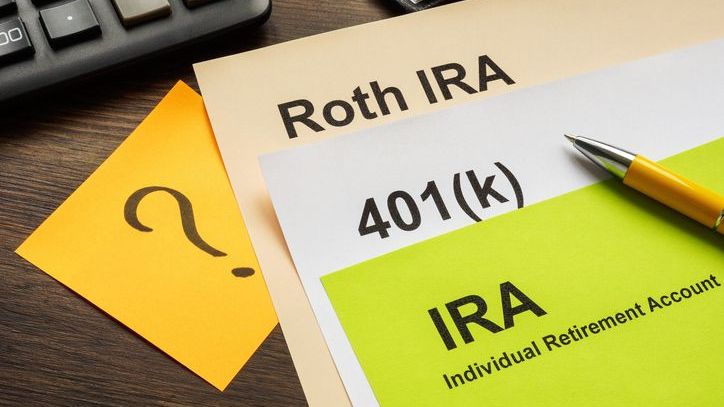Consolidating your retirement accounts can simplify your financial planning, reduce fees and provide a clearer picture of your overall savings. By combining multiple accounts into one, you can streamline your investment strategy, make tracking your progress easier and potentially enhance your portfolio’s performance. Whether you have 401(k) plans from previous employers, IRAs or other savings vehicles, knowing how to consolidate retirement accounts effectively can help you manage your savings more efficiently and confidently.
A financial advisor can help you make important decisions regarding your retirement savings.
Which Retirement Accounts Can Be Consolidated?
Common types of accounts that can be consolidated include 401(k) plans, IRAs, SEP IRAs and SIMPLE IRAs. These accounts can often be rolled into one another, allowing for easier oversight and potentially lower fees. For example, a 401(k) from a former employer can be rolled into a traditional IRA or combined with a current 401(k) plan (if allowed by the employer).
However, not all retirement accounts can be consolidated. Pensions, for example, typically cannot be rolled over into an IRA or another employer’s 401(k). Additionally, certain government retirement plans, like the Thrift Savings Plan (TSP), have specific rules and may not always be eligible for consolidation into a traditional IRA or 401(k).
Additionally, you should note that there is a distinction between consolidating accounts and making Roth conversions. Whereas consolidating involves combining multiple retirement accounts of the same type into one, Roth conversions involve transferring assets from a traditional retirement account to a Roth IRA, potentially incurring taxes on the converted amount. Traditional IRAs, 401(k)s, 403(b)s, and certain types of governmental 457(b) plans can be converted to Roth IRAs.
Understanding which accounts can and cannot be consolidated is vital for maintaining control over your retirement savings and ensuring you can manage your funds effectively. Always check the specific rules of each account and consult with a financial advisor to ensure compliance with regulations and optimal strategy for your retirement goals.
Ways to Consolidate Your Retirement Accounts

There are several methods to consolidate your retirement accounts, each with its own set of rules and tax implications. Choosing the right method depends on your specific circumstances, types of accounts you own and retirement goals.
Direct Rollovers
Direct rollovers offer a straightforward method to consolidate retirement accounts. By transferring funds directly from one retirement account to another, you avoid any tax penalties. This option is ideal for those who want a seamless transition without handling the money themselves.
Indirect Rollovers
Indirect rollovers involve receiving a distribution from your retirement account and depositing it into another within 60 days. While this method provides more control, you will need to adhere to the 60-day rule to avoid taxes and potential penalties. Indirect rollovers can be beneficial for those who may need temporary access to their funds. Take note: Some plans will require withholding for indirect rollovers.
Transfers Within the Same Plan
Transfers within the same plan are typically considered consolidations because they involve merging multiple accounts within the same plan type, rather than moving funds between different types of plans, as in a rollover. For example, you might want to consolidate multiple IRAs into one to simplify management, reduce fees and streamline investment decisions. So transferring funds from multiple traditional IRAs held at different banks into a single traditional IRA at one bank would consolidate multiple accounts within the same plan type.
Steps for Consolidating Your Accounts
Consolidating your retirement accounts requires careful planning and execution. Here are six general steps to follow:
1. Assess Your Current Accounts
Begin by taking inventory of all your existing retirement accounts. Gather statements from each account to understand the balance, type, and any fees associated. This helps you get a clear picture of what you currently have.
2. Compare Fees and Benefits
Compare the fees and benefits of your current accounts versus potential new accounts. Look at management fees, investment options and any additional services offered. Lower fees and better investment choices can significantly impact your retirement savings over time.
3. Contact Account Providers
When consolidating accounts, you may want to use a current account as a holding account, which means transferring funds temporarily from multiple accounts into one designated account for ease of management or to facilitate subsequent transfers or investments. Once you’ve decided on your approach, reach out to your current retirement account providers to understand their procedures. Then, contact the new account provider to initiate the transfer process. Clear communication between both parties can prevent delays and errors.
4. Complete the Transfer
Depending on the providers, funds may be transferred directly from one account to another or you might receive a check to deposit into the new account. A direct transfer is simpler and avoids potential tax withholding issues.
5. Assess Your Asset Allocation
Typically, when accounts are consolidated, they are liquidated to be rolled over, so they aren’t invested yet. So, after your accounts are consolidated, you will have to choose your investments and assess your asset allocation to line up with your retirement goals and risk tolerance. This might involve rebalancing your portfolio or diversifying your investments to optimize growth and minimize risk.
6. Keep Records
Finally, maintain detailed records of the rollover process, including confirmation statements and communications with financial institutions. These records will be essential for tax purposes and future financial planning.
Should You Consolidate Your Retirement Accounts?
Before combining your retirement accounts, carefully weigh the pros and cons of your decision and assess whether it aligns with your financial goals and needs.
Pros of Consolidating Retirement Accounts
- Simplified management: Combining accounts into one reduces the complexity of managing multiple retirement funds.
- Cost efficiency: Consolidation can lower fees by eliminating duplicate administrative costs.
- Easier tracking: It simplifies tracking investment performance and making adjustments as needed.
- Enhanced investment strategy: A single account can provide a clearer overview for more strategic investment decisions.
- Required minimum distributions (RMDs): Easier to calculate and withdraw RMDs from one account rather than multiple ones.
Con of Consolidating Retirement Accounts:
- Potential fees: Some accounts may charge fees for transferring or closing accounts.
- Loss of account-specific benefits: Different retirement accounts may offer unique benefits that could be lost when consolidating.
- Limited investment options: Combining accounts may reduce the variety of investment options available.
- Tax implications: Rolling over accounts may have tax consequences, particularly if not done correctly.
- Timing issues: Market conditions at the time of consolidation might affect the value of investments being transferred.
Bottom Line
Consolidating your retirement accounts can significantly streamline your financial planning, offering a clearer picture of your savings and potentially reducing fees. By merging multiple accounts, you simplify your investment strategy, making it easier to track progress and enhance portfolio performance. Whether dealing with 401(k) plans from previous employers, IRAs or other savings vehicles, understanding how to consolidate effectively is crucial for efficient and confident management of your retirement savings.
Retirement Planning Tips
- Whether your retirement savings are consolidated in one account or spread across several, understanding how much those savings could be worth by the time your retire is an important piece of the planning puzzle. SmartAsset’s retirement calculator can help you estimate how much income your savings and Social Security will provide you in retirement, and whether it will be enough to meet your projected expenses.
- A lot goes into creating a comprehensive financial plan for retirement. Luckily, a financial advisor can help you navigate the process. Finding a financial advisor doesn’t have to be hard. SmartAsset’s free tool matches you with up to three vetted financial advisors who serve your area, and you can have a free introductory call with your advisor matches to decide which one you feel is right for you. If you’re ready to find an advisor who can help you achieve your financial goals, get started now.
Photo credit: ©iStock.com/mapodile, ©iStock.com/designer491, ©iStock.com/Moon Safari
Read the full article here




